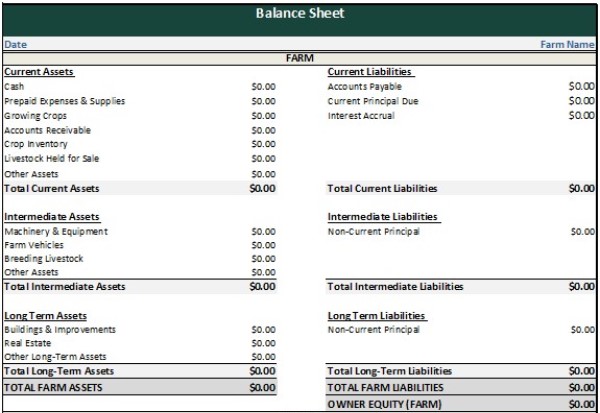Design the right QuickBooks chart of accounts for your farm
QuickBooks is a popular recordkeeping software used on farms. It allows you to easily enter deposits, print or enter checks and create reports with the resulting information. Setting up the software and customizing it for your farm can be a daunting task.

QuickBooks is a popular recordkeeping software used on farms. The software allows you to easily enter deposits, print or enter checks, and create reports with the resulting information. Setting up the software and customizing it for your farm can be a daunting task. Both desktop and online versions of QuickBooks require a chart of accounts to categorize each transaction.
The chart of accounts is the list of categories to which you assign your transactions. Farming uses a unique chart of accounts as compared to other small businesses. For example, farm accounts would include:
- Crop Sales for crop sale transactions
- Chemicals for chemical purchases
- Equipment for your equipment sales and purchases
- Operating Loan for deposits and payments into your operating loan
An effective chart of accounts accurately separates assets, liabilities, income, expenses, and equity transactions. Both QuickBooks Desktop and QuickBooks Online come with a default chart of accounts for farms. But their base chart of accounts does not fully capture the information needed for tax preparers, lenders, and farm managers. No matter the type of farm you have, it is important to accurately convey your farm’s financial records to tax preparers, lenders, and your management team. Providing effective information requires keeping records that are well-designed and relatively simple to maintain.
The MSU Extension Chart of Accounts for QuickBooks provides a more complete template for farms that utilize QuickBooks for their financial recordkeeping. The list of accounts is intentionally extensive in order to encompass the diverse needs of Michigan farms. However, you can streamline the chart of accounts to your farm while still fully capturing information needed for tax preparers, lenders, and your management needs.
The best way to streamline the chart to your farm is to inactivate or delete accounts not relevant to your business. Then, use subaccounts to separate information that is needed for your farm. The MSU Farm Business team recommends that any relevant main accounts be used as specified within the chart. Using main accounts this way effectively categorizes farm transactions while staying close to IRS Schedule F tax forms. This also allows for streamlined or expanded reports as needed. For example, a tax preparer or lender might prefer a streamlined profit and loss report, while an expanded report can provide you with additional management information.
Download MSU Extension QuickBooks Chart of Account
For help identifying specific accounting needs for your farm, please contact your tax preparer and/or lender. You can also contact your local MSU Extension Farm Business Management Educator for additional information.
The MSU Extension Chart of Accounts for QuickBooks was developed by the MSU Extension Farm Business Team in cooperation with MSU’s TelFarm.



 Print
Print Email
Email

